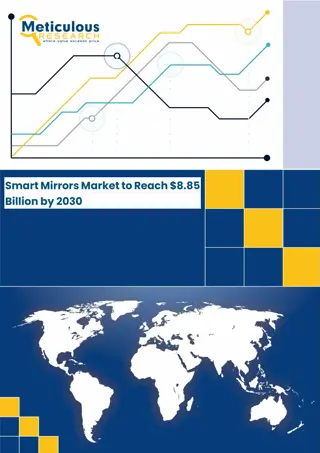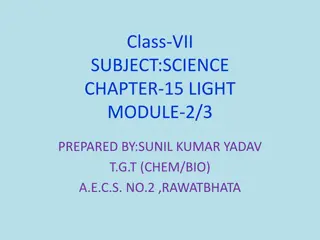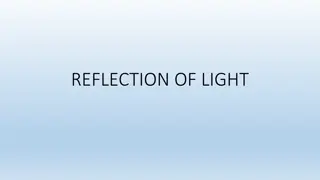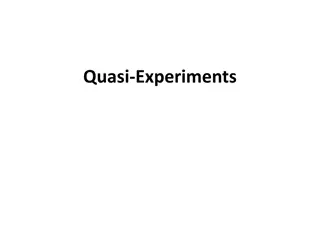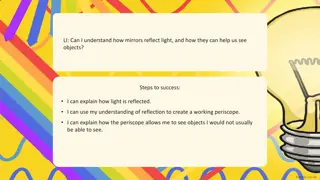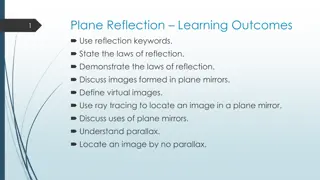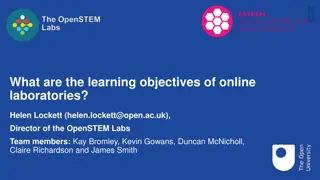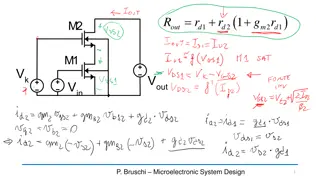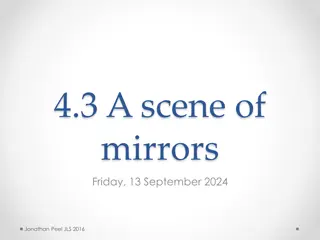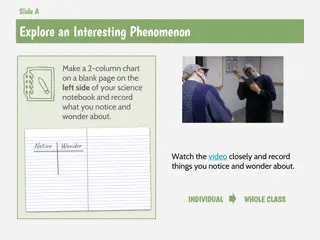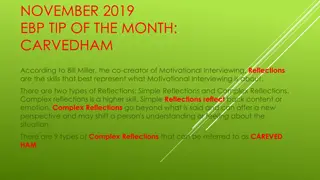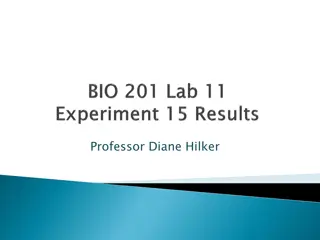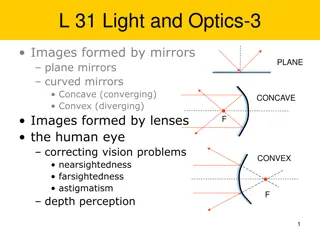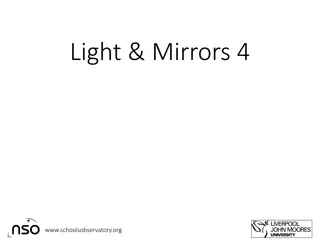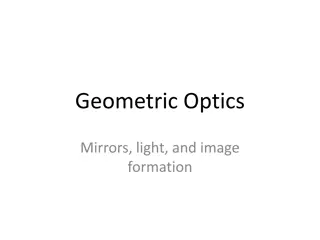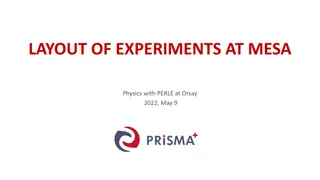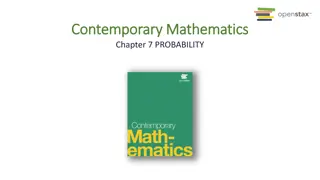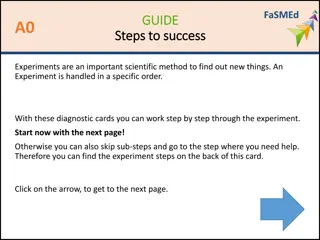Exploring Reflections and Mirrors Through Fun Experiments
Discover the fascinating world of reflections and mirrors in this engaging learning adventure. Understand how mirrors work, explore the differences between shiny and dull surfaces in reflecting light, and conduct hands-on experiments to test materials for their reflective properties. Join in as we predict mirror reflections, observe how materials reflect light, and investigate the behavior of light traveling in straight lines. Get ready for an exciting exploration into the world of optics and reflections!
Download Presentation

Please find below an Image/Link to download the presentation.
The content on the website is provided AS IS for your information and personal use only. It may not be sold, licensed, or shared on other websites without obtaining consent from the author. Download presentation by click this link. If you encounter any issues during the download, it is possible that the publisher has removed the file from their server.
E N D
Presentation Transcript
Last week we learnt The difference between a real source of light (examples ..) And what is just a reflector (examples ) And that light can ONLY TRAVEL IN STRAIGHT LINES
This week we are going to look more at . Reflections and mirrors
Mirrors Mirrors are made of a flat piece of glass which is transparent. On the back is an extremely thin coating of silver which is shiny. Light bounces off this very well. This is called a reflection. But look carefully at your mirror now! The image in a mirror is always the other way round!
Today. We will be doing 4 experiments with reflections this afternoon. We will split into groups and rotate around the activities. We will spend 15 mins on each activity.
Experiment 1: Predicting Reflections. Now that you know that mirror images are the other way round you are going to draw a reflection of a girl in a mirror. You are also going to see how the position of a mirror can change the reflection of a drawing of a lamp.
Reflections Surfaces that are shiny reflect light well and produce reflections. Surfaces that are dull reflect only a little light or none at all.
How can I do an experiment to test if materials reflect? 1. Test how quickly each material slides down hill. 2. Test to see if I can see my face in each one. 3. Test to see how quickly each one gets hot. 4. Measure how bendy each material is.
YESTest to see if I can see my face in each one! Experiment 2: Shiny or dull? You will have a tray of materials and you need to see which ones you can see your face in. Record them on a sheet. Can you think of some of your own? You should notice that it is only the shiny ones that show your reflection.
Light travels from a source in straight lines Last week we learnt that light can only travel in straight lines. If we block the light it can t bend round the object. This part of the wall is dark. This part of the wall has the light on it.
Using reflection to bend light You are going to use mirrors to bend the light! Actually, the light reflection will be bouncing off the mirrors, still in straight lines. You can move the torch (light source) to change the direction of the reflected light. Mirror
Experiment 3: Round the bend! You will use mirrors to bounce a beam of light around a book so it will hit a target. Mirrors Mirror Target Book
Experiment 4: Seeing round corners You are also going to go into the corridor and use a mirror to see around corners. Use string to mark the light path. What do you notice about the angle formed between the lines?
Why would we need to bend light? Can you think of an object that uses this effect to see round corners and out of water? Yes, a Periscope!
Scientific recording Remember light is always drawn as a straight line with an arrow ..USE A RULER!! A mirror is always drawn as a thin rectangle. USE A RULER!!


